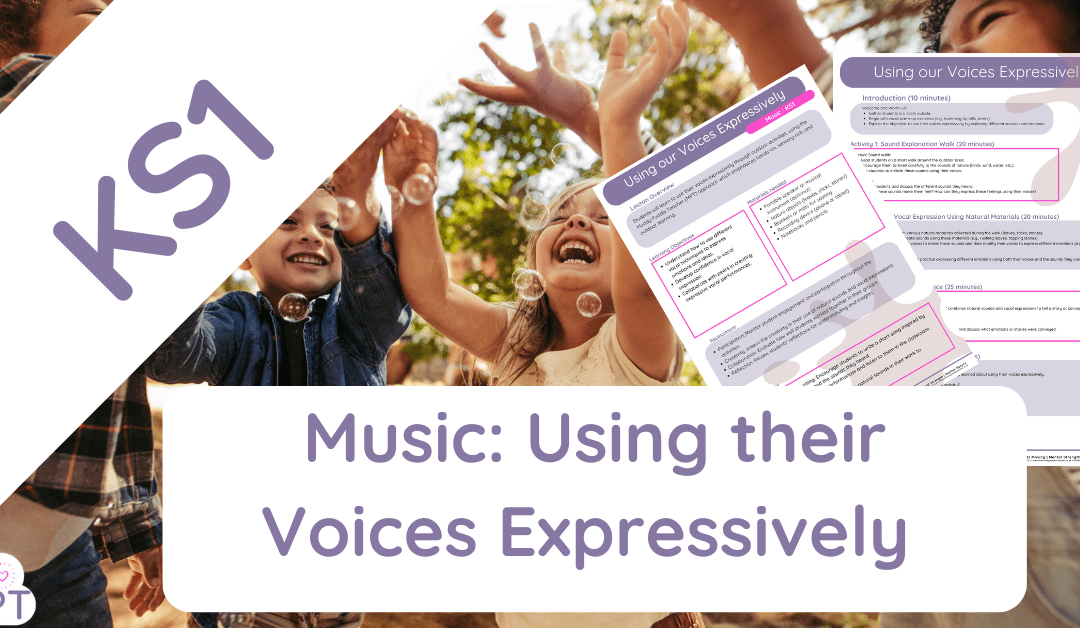How to Teach Children to Use Their Voices Expressively Outdoors
Teaching children to use their voices expressively is a rewarding endeavour, especially in the stimulating environment of the outdoors. Use their voices expressively is a lesson plan that will inject some fun into your day of teaching for you and the children. The natural world provides a dynamic and engaging backdrop for vocal exercises, encouraging creativity and enhancing the learning experience. Here’s a comprehensive guide on how to teach children to use their voices expressively outdoors using the Muddy Puddle Teacher (MPT) approach.
Why Teach Voice Expression Outdoors?
Outdoor learning has been shown to boost children’s physical and emotional well-being, reduce stress, and increase engagement. The open spaces and natural acoustics of the outdoors provide an ideal setting for vocal exercises, allowing children to experiment with their voices without the constraints of indoor environments.
For more information on the benefits of outdoor learning, check out these resources:
Step-by-Step Guide to Teaching Expressive Voice Outdoors
1. Warm-Up Activities
Start with simple warm-up exercises to prepare the children’s voices. These exercises help to relax the vocal cords and encourage proper breathing techniques.
Activities:
- Humming and Lip Trills: Gently wake up the vocal cords.
- Stretching and Breathing Exercises: Relax the body and increase breath control. Learn more about vocal warm-ups from Music Teacher’s Helper.
2. Sensory Sound Walk
Take the children on a sensory sound walk to explore the natural sounds around them. This helps them to develop listening skills and understand how to modulate their voices to mimic different sounds.
Activities:
- Walk through a natural area and pause at various points to listen to the environment.
- Ask children to describe and mimic the sounds they hear, such as birds chirping or leaves rustling.
For more ideas, see Nature Sound Walks.
3. Storytelling with Voices
Use the natural environment as a stage for storytelling. Encourage children to use their voices expressively to bring characters and scenes to life.
Activities:
- Create a story inspired by the surroundings.
- Assign roles and have each child use their voice to portray different characters or elements.
Explore more storytelling techniques at Scholastic.
4. Vocal Play and Improvisation
Encourage children to experiment with their voices through playful activities and improvisation games.
Activities:
- Echo Games: One child makes a sound or says a phrase, and the others echo it back with variations in pitch, speed, and volume.
- Call and Response Songs: Sing simple call and response songs that require expressive vocal use.
Learn more about vocal play at Music Together.
5. Reflection and Feedback
After the activities, gather the children to reflect on their experiences. Discuss what they enjoyed and found challenging, and provide positive feedback.
Activities:
- Sit in a circle and share experiences.
- Ask reflective questions and provide constructive feedback.
For reflection techniques, visit Teaching Channel.
Integrating the MPT Approach
The Muddy Puddle Teacher (MPT) approach emphasizes outdoor, hands-on, and sensory-rich learning. Here’s how you can integrate this approach into teaching expressive voice use:
MPT Internal Links:
- Modeling Outdoor Learning
- Exploring Sound and Music Outdoors
- Using Natural Materials for Learning
- Outdoor Storytelling Techniques
- Reflective Practices in Outdoor Learning
Conclusion
Teaching children to use their voices expressively outdoors is an enriching experience that combines the benefits of nature with creative learning. By incorporating warm-up activities, sensory sound walks, storytelling, and vocal play, educators can help children develop their vocal skills in a fun and engaging way. The natural environment not only enhances their learning experience but also fosters a deeper appreciation for the world around them.
For further reading and resources, check out these links:
- Outdoor Classroom Day
- Nature-based Learning
- Project Learning Tree
- Edutopia on Outdoor Learning
- National Association for Music Education
Encourage your students to explore and use their voices expressively in the great outdoors, and watch their confidence and creativity soar!


